I wasn’t sure what to expect from Rome when my husband suggested we visit as part of our honeymoon. Italy had evaded me in all my years of travel, and though I did desperately want to visit, I thought to myself, “how could anything possibly compare to my beloved Paris?” The other big international cities had long buried themselves into my heart – Tokyo, Berlin, London – was there space for another? Now, if you’ve been reading my blog for a while you’ll know that anything historical or cultural will grab me, hook line and sinker. So you’ll understand why spending our first day in the ancient ruins of such a magnificent civilisation helped Rome land a cosy spot right under Paris’ wing. 🙂 I suggest you start your visit here as well.
Our apartment (booked again through Wimdu) backed onto Parco del Colle Oppio, a lush green expanse of land with a pathway that leads to the Colosseum. To me, it was a picturesque ten-minute stroll to the great amphitheater, although I’ve heard it can be dangerous at night, so best to walk this way in daylight only.
Even from afar, the Colosseum is quite a sight – the largest amphitheatre in the world, it’s incredible to imagine that construction of this architectural beast started as far back as 70 AD. Since then, it has suffered several fires, lightning strikes, and earthquakes – the most devastating one destroying the Southern wall in 1349. Sadly, it was never fully restored despite many Papal initiatives and restoration projects. Fallen stone and marble, and even bronze fittings, were taken from the site to repair other buildings damaged by the same natural disasters.
Once there, we were immediately ambushed by ticket sellers for guided tours, and buskers dressed as gladiators propositioning us for a photo opportunity. We politely declined both offers and stood in the relatively short line. I say relatively short because, while it did wind around a few corners, it shuffled along quite quickly. It would have been a 20 minute wait in total, but at least most of it was undercover – a welcome reprise from the September sun.
The inside of the Colosseum is electric with nostalgic energy. Walking through the massive structure, you can almost hear the roar of 80,000 blood-thirsty spectators, feel the hairs on your arms stand on end with nervous tension, practically see the clash of gladiator steel against beast and man alike, before you.
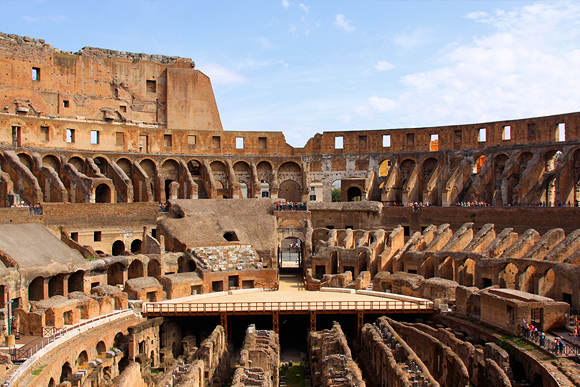
The arena floor is all but gone – the arc of floor in the back of this photo is a recreation of what it would have looked like.
Right up until the 6th Century, the amphitheater was a stage for executions, hunts, and gladiator shows. Beasts of all shapes and sizes were pit against the ancient warriors, or against slaves. Prisoners were condemned to death in accordance with traditional Roman myth; either mauled by raging animals or burned alive. And to enhance the spectacle? The Colosseum floor was decorated for each performance, from simple sets using real trees and painted, prop buildings, to completely flooding the arena using a nearby aqueduct for a sea-battle scene.
Below the stage was a complex series of tunnels, hydraulic lifts, and hinged doors – the hypogeum. The unlucky participants would be funneled through these tunnels, waiting underground until their time was called, and were then expelled upwards into the blinding light of day…
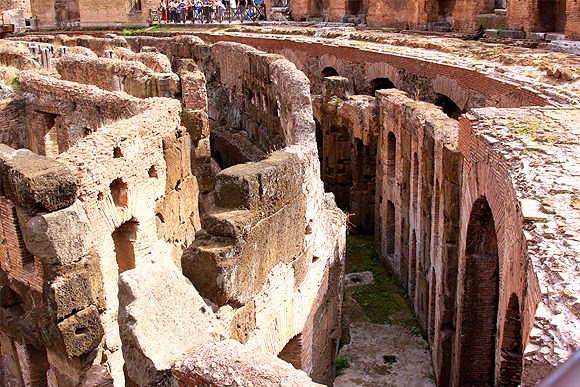
A close-up of the underground tunnels at the Colosseum – they would have been so claustrophobic! I can imagine how scary it would have been to be a slave or prisoner awaiting their impending battle.
Can you imagine what it would have been like to hear thousands of people screaming in unison to see your blood spilled, outstretched arms pounding their thumbs-down fists in the air? To feel the chill up your spine as you hear the thunder of hooves galloping towards you, the smell of dirt in your nostrils, to trip over your sandals in a panicked attempt at escape and collapse on the sandy, wooden floor, turning onto your back just in time to see the flash of a sword in the sun above you, or the gnashing maw of a beast lunging towards you?
Absolutely terrifying.
But in recent years, the Colosseum has justly-so – and ironically-so – become a symbol of the movement against capital punishment. Since Italy’s last execution in 1947, several demonstrations took place at the iconic amphitheater until the death penalty was permanently abolished in 1994. Now, each time a condemned person around the world has their sentence revoked, or when a country abolishes their death penalty, the lights of the Colosseum shine gold at night instead of white, in triumph.
The famous amphitheater is open every day except New Years Day, May Day, and Christmas Day, from 8.30 in the morning. Closing times vary by season – you can check the specifics on the official Colosseum website. With the audioguide (which I highly recommend), it’ll put you back around AU$25.
Outside the Colosseum is the Arch of Constantine, built in 315 in celebration of Emperor Constantine’s victory at the Battle of Milvian Bridge. He rode triumphantly through the arch on his way home, as did every emperor in the years after him. What struck me the most about this particular arch is that it was one of very the first of it’s kind. If you’ve been to Germany or France, no doubt you’ve seen the Brandenburg Gate, and the Arc du Triumph; both of which were inspired by this one.
Neighbour to the Colosseum is the Roman Forum; a square in ancient Rome that was the throbbing heart of this great city. Surrounded by the Palatine and Capitoline hills, the Forum was the home to all important government buildings, and the site of judicial trials, elections, public announcements, processions, and more.
This time, we didn’t need an audioguide. We had a bought a picture book titled, “Rome Reconstructed” from the Colosseum bookshop, which is much like a child’s picture book with tabs that fold over, allowing you to superimpose an illustration of Late Empire Rome on top of a photo of the modern-day ruins. Here are some of our favourites.
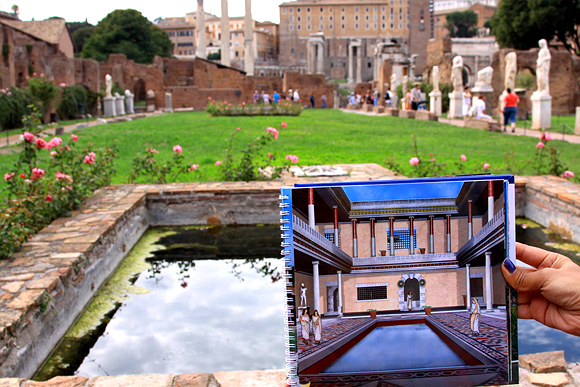
The House of the Vestal Virgins was home to the Roman equivalent of modern-day nuns, their chastity paramount to their power. If they ever broke this vow they would be buried alive, returning to the Earth that bore them.
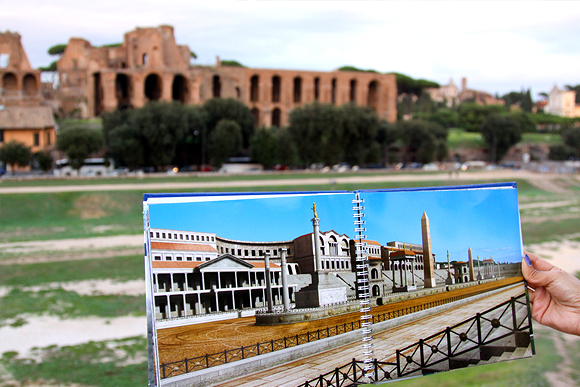
The Circus Maximus is still to this day buried under soil and grass. It was the site of ancient religious ceremonies, games in honour of the Gods, and according to legend, the Rape of the Sabines.
There is so much history and culture to soak up with every step you take through these hallowed ruins. I could detail the story behind every fallen stone for you here, but then where would be the magic when you visit yourself? Take your time with this part of the city, imagine the ghosts of burly warriors clad in leather and silver striding beside you, councillors draped in white mulling over ethics on the corner, and common Romans hurrying to and from the busy Forum marketplace, baskets laden with fresh fruit and bread. It’ll take the best part of a day to walk through these chapters of Rome, but it’s well worth it.
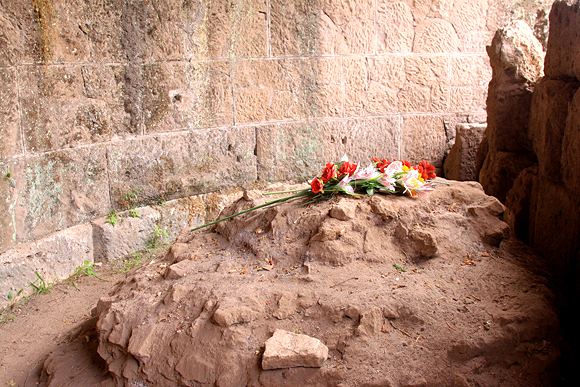
Hidden away in what remains of the Temple of Caesar, the mound of rock that was once the altar has become a place of tribute to the great leader.
Have you been to the Roman ruins? What was your favourite monument?
 Enjoyed this post? Read the next post from this series: “A Honeymooner’s Guide to six weeks in Europe” now!
Enjoyed this post? Read the next post from this series: “A Honeymooner’s Guide to six weeks in Europe” now!



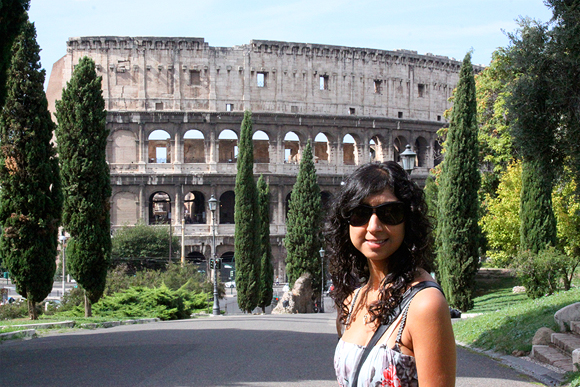
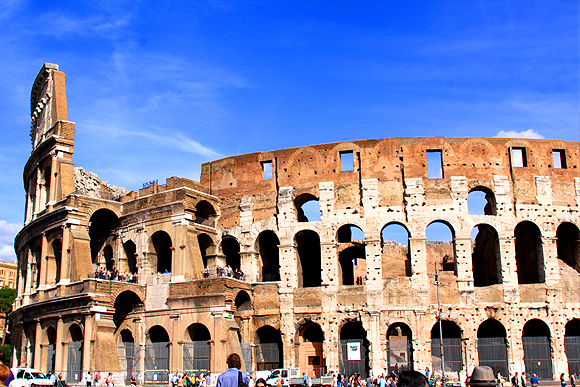

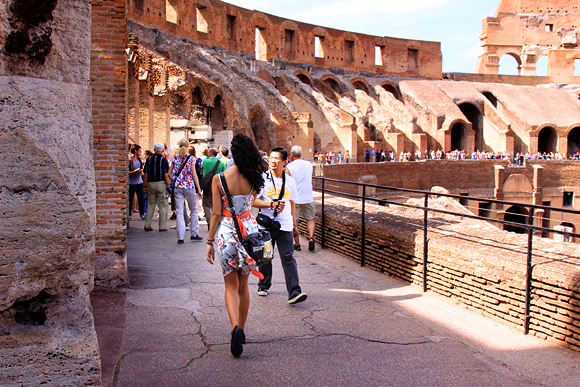
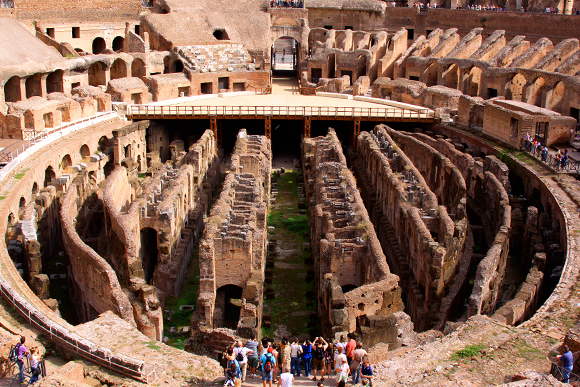
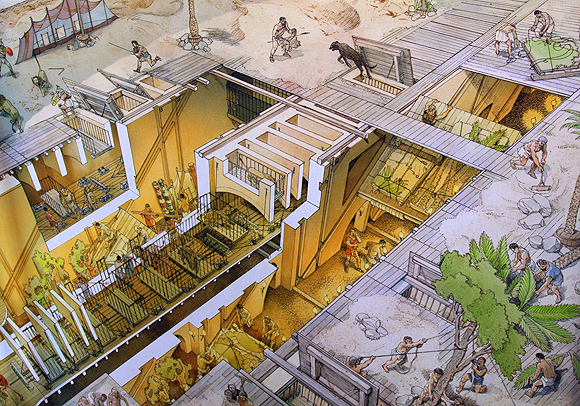
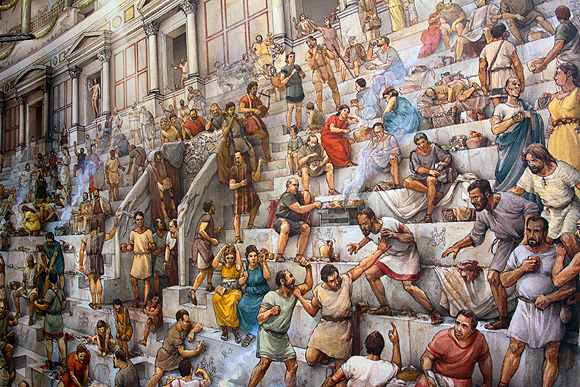
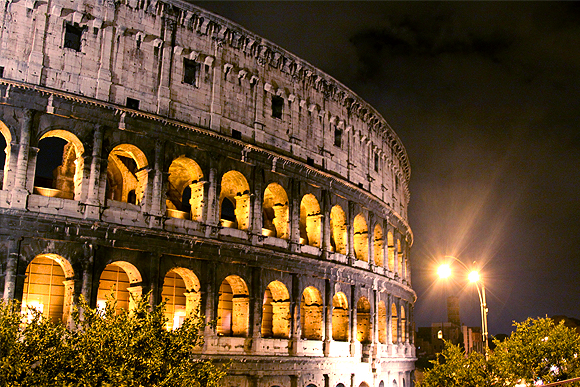
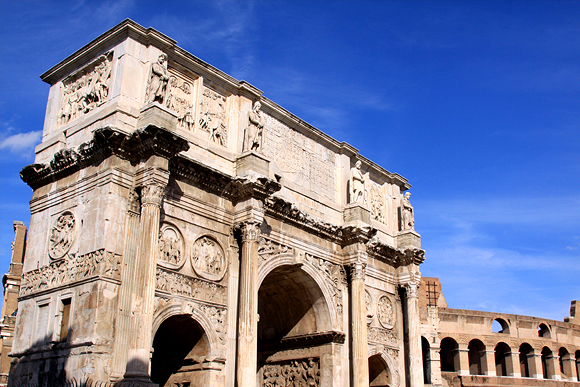

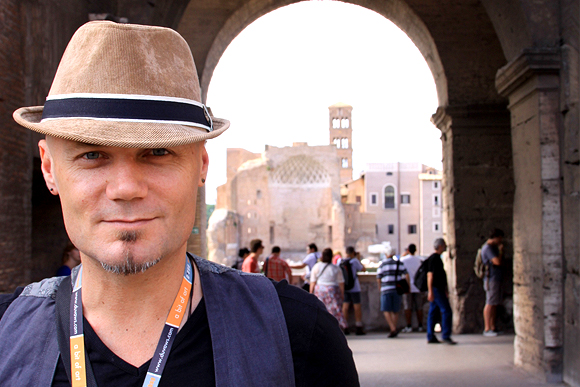
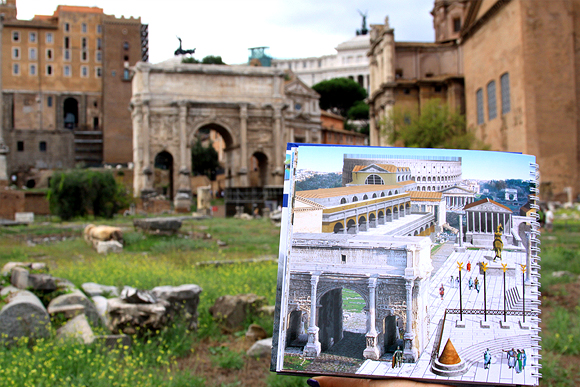
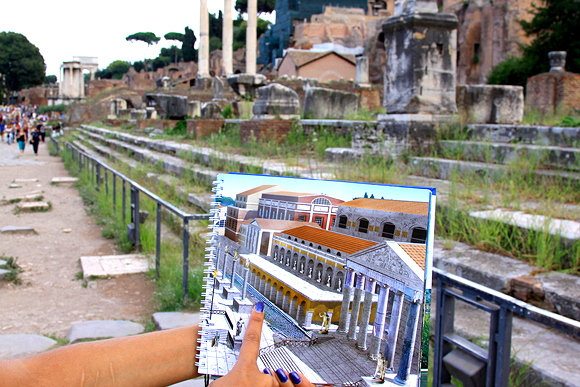
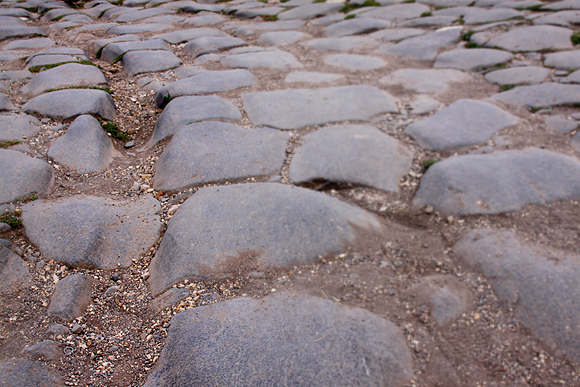
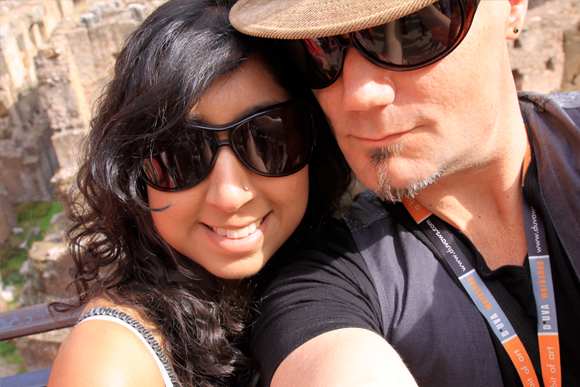
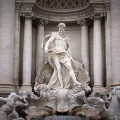

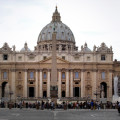
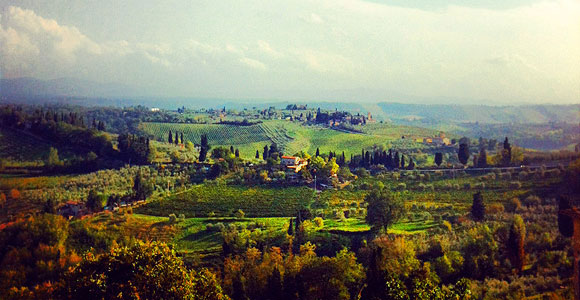
Thanks for opening the door for someone who always wondered what the Col. looked like. I was there in 1972 but as one older grew, ones interest starts to grow and the history of the city and the Roman Empire is something that entriques and fascinates me. I would love as artist to start a collection in South Africa of old buildings, statues and what is left. I think we in South Africa and in many parts of the world, especially Africa, needs to know more about the Roman Empire and what is left of it. The background of the Martyrs etc, etc.
Please come back to me. I will appreciate it tremendously!
Greentings.jan.